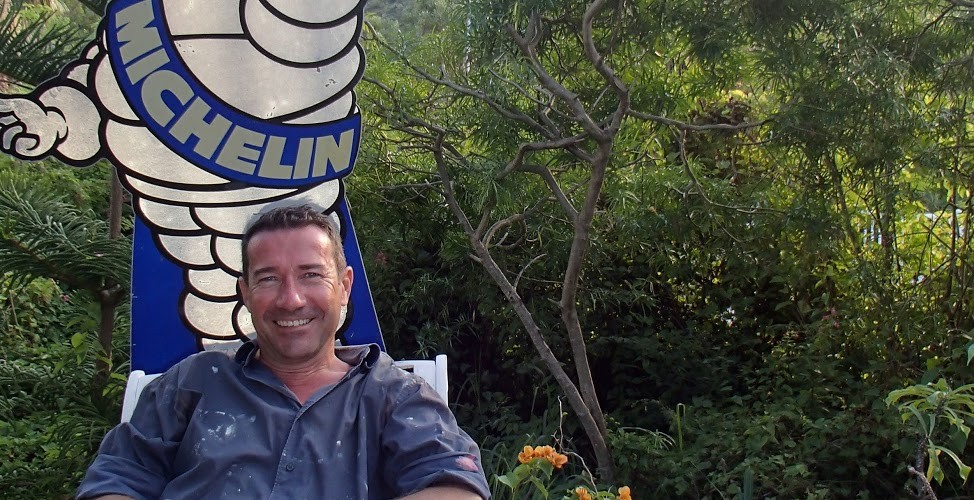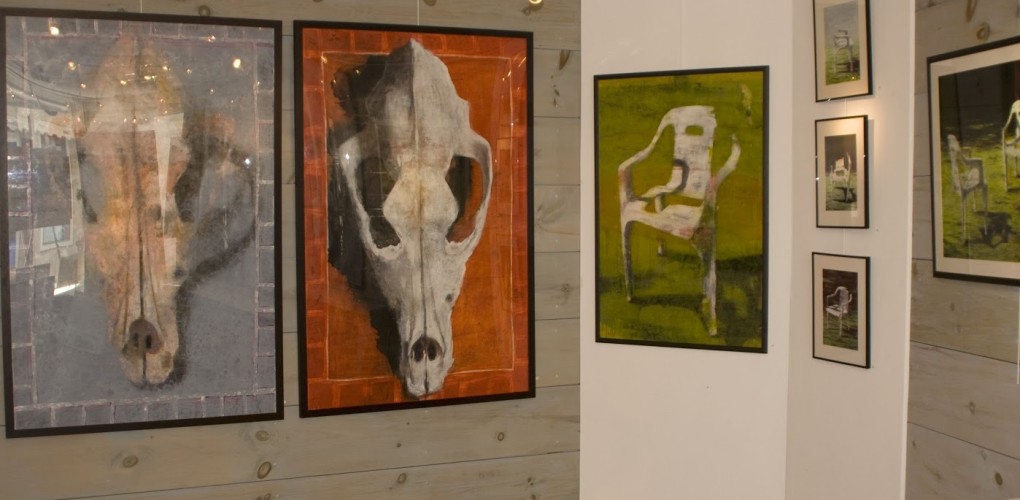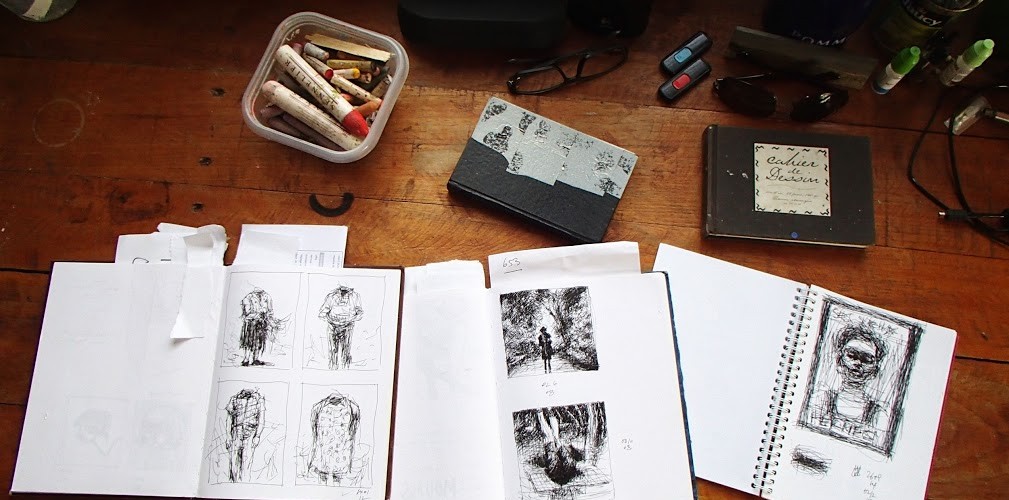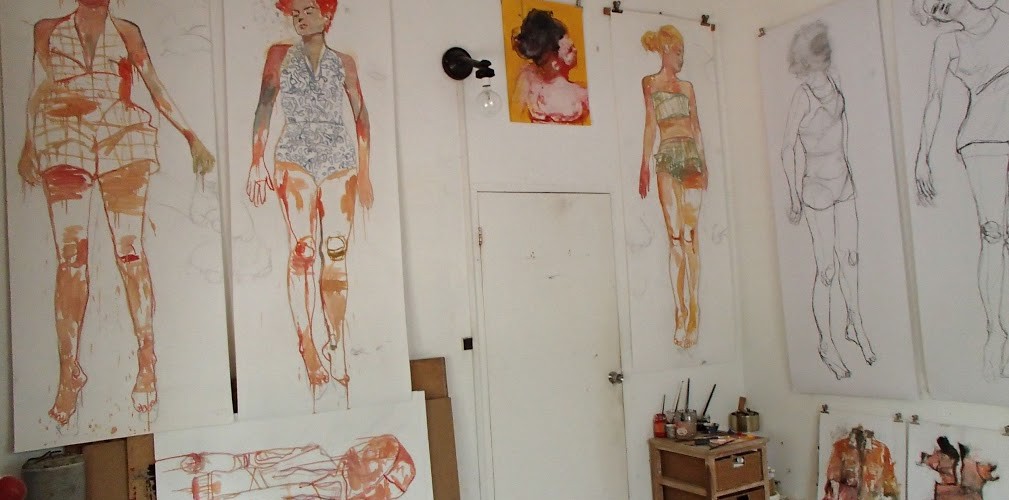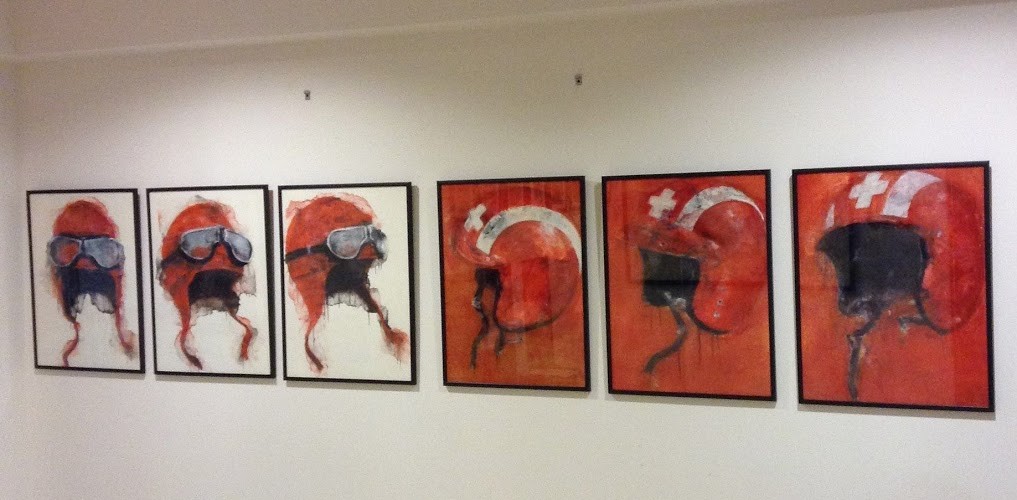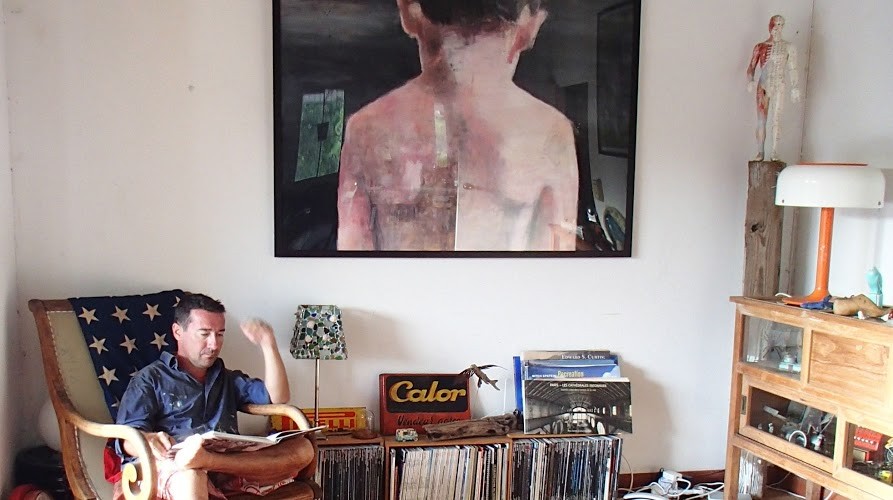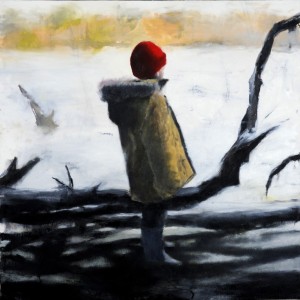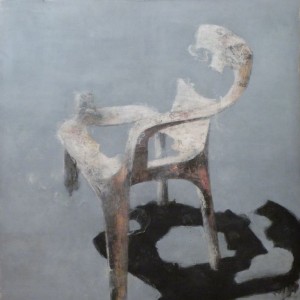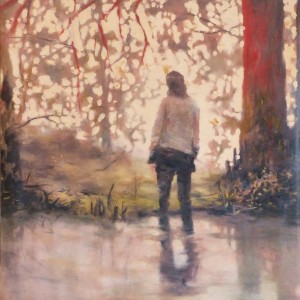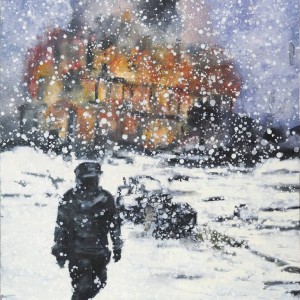Inside the Studio
Wilfrid Moizan
What are the major themes you pursue in your work?
When I returned to painting ten years ago, after a long break, I used old pictures of my family to make portraits. Working on those souvenirs made me realize how important memory and history were to me. From that period it became an obsession, and vintage snapshots are now my principal source of inspiration.
Even if I work on different series, sometimes for more than a year, I keep the same line; the subject is a witness of a story or history. A helmet is a portrait, a chair is a body, a landscape is a viewer; the human character is always present in my painting.
All of my series, from “Hibakusha” to “Heroes,” are connected by questions about solitude, time and space. My work is strongly influenced by engraving. I use many layers, destroying and rebuilding, so it gives the feeling of something fragile, about to disappear.
What was the best advice given to you as an artist?
I think it was given to me by a teacher in Art school: “draw everyday, and reduce your palette.”
Prefer to work with music or in silence?
I used to listen a lot of Jazz and Funk music very loudly, but now I appreciate working in silence.
If you could only have one piece of art in your life, what would it be?
There are many painters I really love: Francis Bacon, Francisco Goya, Marlene Dumas. But there is one painting more important than others to me, and that is the portrait of Juan De Pareja, by Diego Velasquez; it’s probably one of the most powerful portraits ever painted.
Who are your favorite writers?
My favorite writers are Dino Buzatti, Louis Ferdinand Céline, and Yukio Mishima. My favorite book is “La nuit des temps”( The ice people in English) by René Barjavel. I read it once a year, it’s such a fantastic story.
